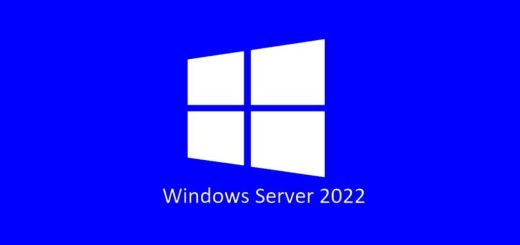Unlock the Power of SharePoint Wiki: A Step-by-Step Tutorial
What is a SharePoint Wiki?
A SharePoint wiki is a site designed for groups of people to quickly capture and share ideas by creating simple pages and linking them together. Your organization can use a wiki for a variety of uses. On a large scale, you can share large volumes of information in an Enterprise wiki.
There are several reasons businesses choose SharePoint Site Wiki for their content. It is vital to understand what type of content will be published, how it will be used, and who will be responsible for maintaining the site page’s library and text layout.
The Wiki page library is great for creating simple intranet portals, and it is popular as a team enterprise wiki site
The wiki is a site used in 3 Common scenarios:
- Self-Help Guides (team collaboration pages)
- Organization information (org charts, contact information, etc.)
- HR pages (holiday forms, documentation on HR processes)
It is not always clear how to use the wiki; it is best to consider it a blank canvas and build it in stages.
Before deciding on the Enterprise wiki, it is important to consider 4 key questions:
- What content are you going to publish?
- How will people use the data you have published?
- How will this content be created?
- How will the content be maintained?
How to create a SharePoint Wiki
There are 3 ways to create a WIKI in SharePoint 2013/2016/365. I would always recommend Method 3, it does involve a little more work to do, but it’s a lot easier to manage when Wiki grows in size
1) Site Pages Document library
Site Pages > New Wiki Page.
2) Wiki Library web part (add to any page as a Web part)
Settings > Add WebPart
3) Enterprise Wiki to create a dedicated wiki subsite
New Subsite > Enterprise > Enterprise Wiki
This method is often preferred for larger wikis or when you need more control over permissions and organization. It creates a separate site specifically for your wiki content.
Why use the SharePoint WIKI page library
- Wiki’s are a freeform, informal way to share information.
- Good for brainstorming, capturing thoughts, and building policies.
- It’s great for collaboration – team sites (many minds make light work)
- Great for Knowledge base / Procedures portal
- Works best for small teams who work often together (For Example, Project Office / HR department)
Warnings About Creating Simple Wikis
Remember, there are no permissions or control over who edits wiki pages, anyone with access to the page can edit it.
This is why smaller teams prefer to use a Wiki for collaboration. It is not recommended to use a Wiki companywide because all users, no matter what their SharePoint permissions, can edit and update (or break) the Wiki pages.
For wikis requiring stricter access control, using an Enterprise Wiki subsite (Method 3) allows you to set specific permissions for different users and groups.
Wiki Features
Wiki Syntax
It’s all about the double brackets in Sharepoint Wikis. You can use [[ ]] to trigger the wiki syntax. You can use Wiki Syntax to link to existing Wiki pages or link to Wiki pages that have not been created yet. The syntax can also be used to Link to existing Lists [[List: xxx ]] and libraries.
Wiki Ribbons
Ribbons are the most common tool for editing wikis. You can access them by selecting the wiki page you want and clicking Edit in the top right-hand corner.
This will bring up the edit ribbon, which will look very familiar if you have used Microsoft Word before.
Page Ribbon

Above, you can see the Page Ribbon. The ribbon is split into 6 layers
1) Edit: Save and checkout buttons
2) Manage: rename pages, page history, etc
3) Share and Track : Email page & trends
4) Page Actions : Make homepage & Links
5) Page Library: Library settings and View all pages
Format Ribbon
Above, you can see the Format text Ribbon. The ribbon is split into 8 layers.
- Edit (Save and checkout buttons)
- Clipboard (Cut and Paste etc.)
- Font (text font, size, etc.)
- Paragraph (used to format the page layout of text)
- Styles (apply pre-defined styles to your text, heading, text, etc.)
- Spelling
- Layout (Create SharePoint layouts using multiple columns and rows)
- Markup (Edit page at XML level)
Insert Ribbon
Above, you can see the Insert Ribbon. The ribbon is split into 5 layers
- Tables -Allows you to insert and edit tables – just like Excel!
- Media – insert Pictures, video, and audio from multiple sources (e.g. Youtube) – Requires Silverlight.
- Links – This will link internally or externally to any page
- Parts – Allows you to insert web parts or apps that are pre-existing (e.g.. Document Library)
- Embed – Allows you to insert HTML directly into the page. Useful for PayPal payment buttons or content that requires external access.
Page History
This is important as it allows version control on the WIKI. This is also where you can roll back your wiki if someone makes any undesired changes.
Library Settings
A powerful page that allows you to change a lot for the underlying features of the SharePoint page
View All pages
This button is commonly used by teams to show the entire contents of the wiki. This is giving you a top-level view of your wiki. For this to work correctly, you need a logical structure for your wiki pages.
Fundamentals to remember:
- Spelling errors ARE NOT displayed on the wiki page. You must proofread before publishing pages.
- Remember, it’s just a webpage! If you know HTML, you can write it in HTML using the “edit source” button.
- Use Ribbons at the top of SharePoint if Wiki Syntax is confusing
- You can use Tables, pictures, videos, links, apps, and web parts and embed external sites.
- There are several ways to create a new wiki page:
- To create a new page – Click – on the top right, and select “add a page” or
- Navigate to Site contents > Site pages or
- Navigate to Apps and select Enterprise WIKI.
- If you build a large wiki, ensure your new page has a logical name. You might want to consider a numbering convention.
- Remember to SAVE!!!!
- Wiki Syntax is “All about the double square brackets” [[my-wiki-page]]
- Remember, you can embed PowerShell commands into SharePoint.
E.g. Click here to view [[List:calendar]]
E.g. Click here to view [[List:Document library]]
Sharepoint Wiki Powershell One-Liners
Note: These commands require the PnP PowerShell module. You can find more information about the module here: [link to PnP PowerShell documentation]
Here are some PowerShell one-liners for working with SharePoint wiki pages:
- List all wiki pages in a SharePoint library:
Get-PnPListItem -List "Wiki Pages" | Select Title
Get the content of a specific wiki page:
Get-PnPListItem -List "Wiki Pages" -Id 1 | Select FieldValuesAsHtml | %{$_.FieldValuesAsHtml["WikiField"]}
Replace the Id parameter with the ID of the wiki page you want to retrieve.
Add a new wiki page to a SharePoint library:
New-PnPListItem -List "Wiki Pages" -Values @{Title="Page Title";WikiField="Page Content"}
Replace “Page Title” and “Page Content” with the desired title and content of the wiki page.
Update the content of a specific wiki page:
Set-PnPListItem -List "Wiki Pages" -Identity 1 -Values @{WikiField="New Page Content"}
Replace the Identity parameter with the ID of the wiki page you want to update and replace “New Page Content” with the desired wiki page content.
Delete a specific wiki page:
Remove-PnPListItem -List "Wiki Pages" -Identity 1
Replace the Identity parameter with the ID of the wiki page you want to delete.
FAQ on How to use the Sharepoint Wiki Page
What is a Sharepoint Wiki Page?
A Sharepoint Wiki Page is a platform that allows users to create and edit web pages collaboratively. It is an ideal tool for creating and sharing knowledge within an organization, and it’s accessible to everyone with access to the Sharepoint site.
How do I create a new Wiki Page?
To create a new Wiki Page, go to the “Site Content” page, click on “New,” and select “Wiki Page.” Fill in the necessary details, including the page name, description, and content. Once done, click on “Save” to publish the page.
Alternatively, you can create a new wiki page directly within the Site Pages library.
Can I add images and videos to my Wiki Page?
Yes, you can add images and videos to your Wiki Page. To do so, click on the “Insert” tab, select “Picture” or “Video,” and then follow the prompts to upload or embed your media. In modern SharePoint pages, you can easily add images and videos using the rich text editor. You can also embed videos from popular platforms like YouTube and Vimeo.
How do I edit an existing Wiki Page?
To edit an existing Wiki Page, simply navigate to the page and click on the “Edit” button at the top. Make the necessary changes, then click “Save” to publish the updated page.
Can I revert to an earlier version of a Wiki Page?
Yes, you can revert to an earlier version of a Wiki Page. To do so, go to the “Page History” section, select the version you want to revert to, and then click on “Restore.”. This feature is also available in modern SharePoint pages, allowing you to track changes and revert to previous versions if needed.
How do I keep track of changes made to a Wiki Page?
You can keep track of changes made to a Wiki Page by going to the “Page History” section. This section displays a list of changes made to the page, along with the date and time of each change and the author of the change.
Can I restrict access to my Wiki Page?
Yes, you can restrict access to your Wiki Page to a specific group of people. To do so, navigate to the page, click on “Page Permissions,” and then select the group of people you want to grant access to. This is particularly important for sensitive information or when you want to control who can edit the page.
How do I search for a specific Wiki Page?
To search for a specific Wiki Page, type the page name in the search bar at the top of the page. The system will display a list of pages that match your search query. SharePoint’s search functionality allows you to easily find wiki pages, even within large wikis.
How do I delete a Wiki Page?
To delete a Wiki Page, navigate to the page, click on “Page Settings,” and then select “Delete Page.” Confirm the deletion by clicking on “OK.”
Can I collaborate with other users on a Wiki Page?
Yes, you can collaborate with other users on a Wiki Page. Simply invite them to the page by clicking “Share” and selecting their names from the list of available users. SharePoint facilitates collaboration by allowing multiple users to edit and contribute to a wiki page simultaneously.
How do modern pages differ from classic wiki pages?
Modern pages offer a more visually appealing and user-friendly editing experience. They are also mobile-responsive and integrate seamlessly with other modern SharePoint features like web parts and Microsoft Teams.
How can I use page templates in a modern SharePoint wiki?
Page templates provide pre-designed layouts and content to help you quickly create new wiki pages. You can choose from a variety of templates or create your own custom templates.
Can I integrate my wiki with Microsoft Teams?
Yes, you can add a SharePoint wiki as a tab in a Microsoft Teams channel. This allows team members to easily access and collaborate on wiki pages within their familiar Teams environment.
Thanks for taking the time to read this article. if you have any questions or feedback, please write in the comment section below.






Recent Comments